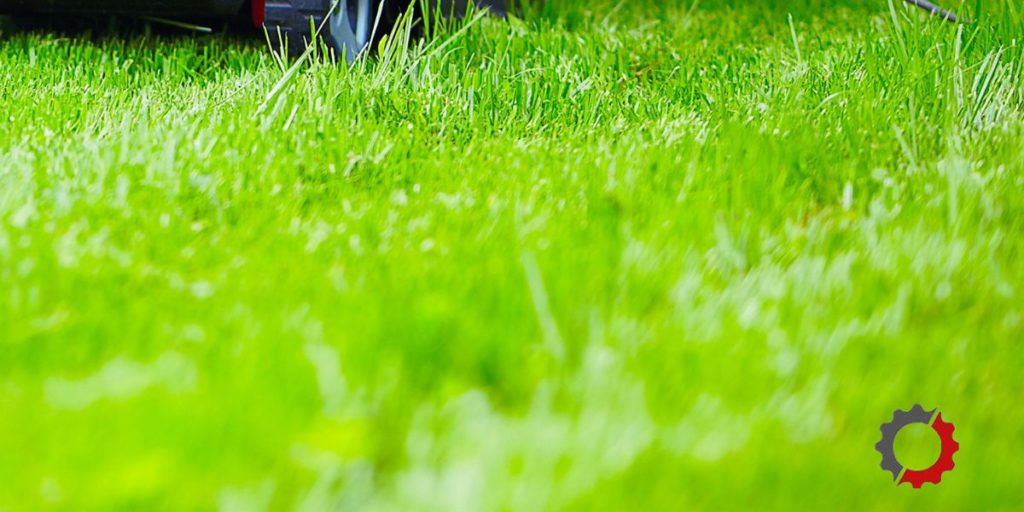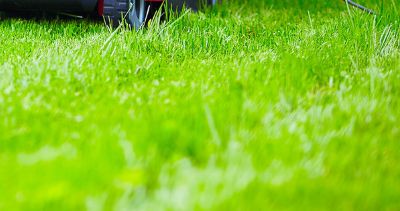You cut your lawn once a week and sometimes more often just to keep the grass from growing too tall and becoming unmanageable. Even though it can seem like a chore at times, you take pride in your lawn and expect a good cut from your Greenworks lawn mower.
A Greenworks mower may start cutting uneven when the wheel is damaged; an air-filled tire is low; the mower blade is dull, bent, or worn; the deck is not level; the deck is plugged with grass clippings; the blade speed is too slow; or the ground speed is too fast.
Keep reading for more items that will give you a bad cut with your Greenworks mower. Follow all safety precautions including shutting off the mower, removing the battery, and waiting for all parts to stop moving before troubleshooting.

12 Reasons Your Greenworks Lawn Mower Cuts Uneven
Greenworks Electric Mower Wheel is Damaged or Tire is Low
The first thing to do when you notice you are getting a bad cut because your Greenworks mower is cutting uneven is to check for a damaged wheel. If you have a zero turn and the tires are air-filled, check for a low tire.
A damaged wheel or low tire pressure can cause the mower to sit unleveled. This means your deck will sit closer to the ground on one side of the mower than the other. When this happens, you will get an uneven cut.
Greenworks push mower wheels: The wheels on a push mower can come loose or become damaged causing the mower not to sit level. Inspect the wheels. Tighten any loose hardware and replace any damaged wheels.
Greenworks zero turn mower tires: Use a tire pressure gauge on the rear and front tires of your mower. Confirm they are filled to the tire pressure recommended by Greenworks. This can be found in your operator’s manual.
The left and right rear tires should have equal tire pressures. If the pressures are not correct, add or remove air until they meet the required pressures.
Greenworks Electric Lawn Mower Blade is Worn or Dull
The next thing to look at is the mower blade. When the blade becomes worn, it won’t make a good cut through the grass. A worn blade will tear the grass.
You’ll notice this when your lawn turns brown a day or two after you mow. The tips of the grass turn brown because the grass is being beaten up and torn by dull blades.
Next time you experience a lawn where the tips turn brown, grab a handful of grass and take a look at the tips. Do they have little tears in them? If so, this is a sign your Greenworks mower blades may need sharpening or replacing.
Remove your mower blade and sharpen them if they are still in good condition. If you find they are extremely worn, have gouges in the blades, the rounded blade ends or the blade sail is thinner than the center of the blade, it’s best to replace it with a new mower blade.
Just in case you don’t know, the blade sail is the high side of the blade that helps create airflow under the deck to assist with a nice cut.
Balance the Greenworks mower blade
Make sure the blade is balanced with equal weight on both ends of the blade. A blade can become out of balance when the blade has become unevenly worn by sand that gets sucked into the underside of the mower deck.
Another way a blade becomes uneven is during the sharpening process. When more metal is removed from one end of the blade than the other, the blade becomes unbalanced.
Check your blade balance using a blade balancer. A balancer is relatively inexpensive. It’s worth the investment because of an unbalanced blade and causes damage to your Greenworks mower.
Another method to check for a balanced blade is by hanging the blade on a nail that is mounted to your wall with the nail head sticking out of the wall about 3/4″ to 1″. You will need to remove metal from the end of the blade that is hanging lower until the blade sits level.
Greenworks Lawn Mower Blade is Bent
When your blade impacts a solid object like a rock, stump, or toy, it can bend causing your Greenworks mower to give a bad cut. To prevent damage to the blade, it’s a good idea to walk the lawn to make sure there’s nothing in the way that you may run over and damage the mower.
A bent blade will cause an uneven cut. It can also cause your mower to start vibrating. Sometimes a bent blade is obvious and sometimes not so the best way is to remove the blade.
Make sure your mower is parked on a flat level surface and remove the safety key and battery pack(s). Wait for all moving parts to stop moving before working under the mower deck.
- Check for a Bent Greenworks Mower Blade By Removing the Blade
Remove the blade and lay it on top of a new Greenworks mower blade. This is the best way to verify whether or not your blade is bent. If you don’t have a blade to match it up to, bring your blade to your local Greenworks service center or parts store for assistance.
NEVER attempt to straighten a bent mower blade to reuse it. When you do this, the metal is compromised and becomes weakened.
It is possible for the weakened area to break off and fly out of your mower deck at high speeds. This could cause injury or damage to people, pets, or objects in the area.
Greenworks Lawn Mower Blades are Installed Incorrectly
You can damage your Greenworks mower by using the wrong blades or installing them incorrectly. Make sure the blades are installed with the sails up. The sails are the high sides of the blade that help create air movement to toss the grass.
When the blade is installed with the sail facing the ground, damage can occur to the blade motor. Instead of cutting the grass evenly, the upside-down blade will beat up and tear your grass. It can potentially hit high spots in the ground causing impact to the blade and potential damage to the motor.
Greenworks Mower Blade is Not Tight
When the blade is not securely attached, the blade will fail to rotate causing your mower not to cut the grass. Refer to your operator’s manual for the right torque specs for the blade bolt and tighten accordingly.
Incorrect Cutting Height on Your Greenworks Lawn Mower
You can end up with an uneven cut when your mower deck is set too low and it isn’t able to handle the amount of grass without compromising the cut. Adjust the mower deck height to a higher setting when cutting thick tall grass.
Greenworks Lawn Mower Deck is Plugged with Grass
Your Greenworks will give you a bad cut when your mower deck is plugged with grass. This is because there is no longer sufficient area under your deck for the blades to create the good airflow needed to give a good precise cut.
A plugged mower deck can also wear on your motor and cause it to work harder when having to turn the blade through the grass clippings under the deck.
Regularly clean the mower deck to keep it free of grass and dirt buildup using a deck scraper or wire brush. Avoid cutting wet grass. Wet grass will clump and stick to your mower deck.
Greenworks Zero Turn Lawn Mower Deck is Not Level
If you are operating a Greenworks zero-turn mower, you need to keep the deck leveled. A deck that isn’t level will cause your cut to be higher on one side of the deck and lower on the other side.
The mower deck must be level from side-to-side. Consult your operator’s manual for instructions to adjust your Greenworks model.
Greenworks Lawn Mower Blade Speed is Too Slow
Some Greenworks mowers have a setting where you can increase or decrease the blade speed to conserve battery power. While mowing at a decreased blade speed will make the battery last a little longer, it can give you a bad cut when trying to cut thick grass.
A faster blade tip speed is needed to cut tall or thick grass. If you have increased the blade speed, make sure you’re not cutting too tall of grass requiring your mower deck to be raised.
Once confirmed you have a good cutting height and you’re still getting a bad cut, it may be time to contact the Greenworks service center. You could have something wrong with the blade motor or power supply.
Greenworks Lawn Mower Ground Speed is Too Fast
Your ground speed needs to be adjusted to your mowing conditions to receive a good cut.
If you don’t properly adjust your speeds and move too fast through your lawn, your Greenworks mower will give you a bad or uneven cut because it may just be pushing over some of the grass instead of cutting it.
Your lawn mower is put under a heavy load when it is cutting thick, tall, or wet grass. You must slow down so your mower is better able to handle the load.
Some models have a setting to speed up or slow down the mower. For push mowers that are not self-propelled, you need to adjust your walking speed.
Greenworks Lawn Mower Deck is Damaged
The deck shell is designed with airflow in mind. It uses the air created by the mower blade to create a suction under the deck to stand the grass tall. The blade then passes by to give it a precise even cut. A damaged deck shell can affect the cutting performance.
You can attempt to fix the deck to get it back to its original condition and shape. If you are unable to adjust the deck shell, it must be replaced.
Your Lawn is Uneven
If you are like me and have a lawn that is not perfectly level, you may run into areas where your mower deck is scalping your yard. This can happen when you have a high spot in your yard where the blade is cutting close so the cut appears bad.
Another area where I see a lot of scalping is in ditches especially if you have a wide format mower deck on a zero turn that cuts into the side of a ditch or hill.
A wide format mower deck can’t adjust with a bend or dip in the yard and therefore scalps the yard or creates an uneven cut. When mowing ditches, it is best to use a smaller format deck like a Greenworks push or self-propelled mower.
